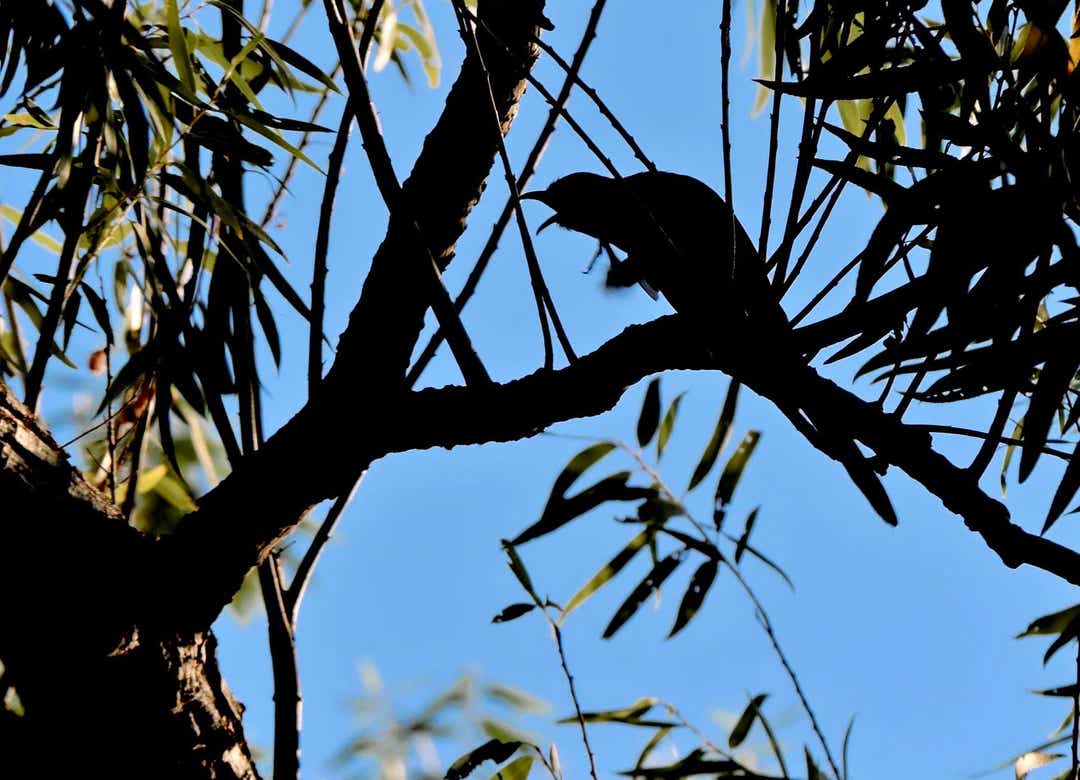
Raise a glass for the rain crow.
Steven Prager, who surveys the western yellow-billed cuckoo in Arizona, certainly will, a toast to celebrate a ruling by the U.S. Fish and Wildlife Service to keep the migratory bird protected under the Endangered Species Act, despite a petition to remove it.
By next August, Prager, a program associate for Audubon Southwest's important bird areas, will be able to raise an actual glass filled with "rain crow." The Audubon is again partnering with breweries to create a hazy IPA, branded after the bird’s nickname, to celebrate the cuckoo’s contributions to Arizona's ecology.
“No matter what you care about in Arizona, whether it's birds, rivers, beer or just having water come out of your tap. This is an issue that should matter to you,” Prager said. “The story of the cuckoo is the story of water management in Arizona.”
The story of the cuckoo
A cuckoo’s coo commonly comes before a monsoon storm, a habit that gave the yellow-billed bird its two colloquial nicknames: rain crow and storm crow.
A study from the fish and wildlife service found that Arizona likely is home to the largest remaining yellow-billed cuckoo population among states west of the Rocky Mountains. The study documents the bird’s substantial population decline from nearly 850 pairs in 1976 to fewer than 170 pairs in 1999.
The study attributes the population decline to the loss of historic riparian habitats that were once abundant in Arizona.
“Loss of the western yellow-billed cuckoo population segment would result in loss of the species from the United States west,” the study stated.
The bird has been considered threatened in Arizona since the late 1980s by the Arizona Game and Fish Department. It received the same designation under the federal Endangered Species Act in 2014.

Since this decision, there have been opposing opinions that claim there is little difference between the western and eastern populations of the bird, reinforcing a belief that the yellow-billed cuckoo is not endangered.
A 2017 petition — supported by the Arizona Mining Association and the Arizona Cattlemen's Association, among others — claimed “threats to the purported (bird) do not now and never have risen to the level that protection under the ESA is warranted.”
The petition claimed, based on “both new data and new interpretations of previously available information,” that the western cuckoo was no different from the eastern and therefore was not in threat of extinction.
Conservation organizations, like the Center for Biological Diversity based in Tucson, vehemently opposed the petition.
“The information did not in any way impeach the fact that these are very rare birds and there are a lot fewer of them than decades ago and they are found in fewer places,” said Michael Robinson, a senior conservation advocate at the center.
Following its review of the petition, the federal agency said removing the bird from the threatened and endangered species list was not an option because new data still shows habitat loss as an issue.
The decision to deny the petition came with a statement from Amy Lueders, the southwest regional director for the agency, who said the service “will continue working with state agencies, federal agencies, academia and others on yellow-billed cuckoo recovery efforts.”
One of the efforts focuses on the bird’s riparian habit. Earlier this year, the service proposed that more than 493,000 acres, across Arizona and several other states, be considered and protected as critical habitat for the cuckoo.
“This is an important first step because the loss of habitat is the main reason the yellow-billed cuckoo is on a trajectory towards extinction,” Robinson said. “The places where the cuckoo can find an abundance of prey are in the richest part of the landscape, along the streams and rivers. The transformation of these rivers means that the places cuckoos have successfully nested have shrunk considerably.”
According to the National Audubon Society, riparian land in the Southwest’s arid climate provides a habitat for over 400 bird species.
The fish and wildlife service study said these “conditions are essential to the survival of the yellow-billed cuckoo in the west, as well as to the survival of many other riparian-dependent species.”
Arizona’s riparian ecology, especially the combination of tree canopies for nesting and bugs for feeding, make the state ideal for the bird.
“The key for them to successfully breed are those bugs,” said Matt Johnson, an avian ecologist at Northern Arizona University. “All of those food sources are what mating and nesting is driven by and those bugs are associated with a native habitat.”
According to Johnson, who has surveyed the bird throughout the state, the cuckoo most commonly nests along the Verde River, Oak Creek and the Lower Colorado River.
“Cuckoos are so connected to the story of our landscape. The bird is an indicator of what’s going on in Arizona water-wise,” Prager said. “They need the flood cycles our rivers would historically have but because of abuse to the land through things like dams, climate change and overgrazing, they’ve lost their habitat.”
While keeping protections for the bird is a start, Prager says continued population growth depends on continued habitat protection.
“We can say we’re going to protect this bird, but what it really comes down to is protecting where this bird lives,” Prager said. “This is a win, but there is still more work to do.”
In November, the Audubon will be launching yet another beer and bird combo that will focus on the burrowing owl.
“This is a start. If you still have some rain crow sitting around, raise a glass for sure,” Prager said. “Even if you don’t just find some craft beer.”
Anton L. Delgado is an environmental reporter for The Arizona Republic/AZCentral. Follow his reporting on Twitter at @antonldelgado and tell him about stories at anton.delgado@arizonarepublic.com.
Environmental coverage on azcentral.com and in The Arizona Republic is supported by a grant from the Nina Mason Pulliam Charitable Trust. Follow The Republic environmental reporting team at environment.azcentral.com and @azcenvironment on Facebook, Twitter and Instagram.
tinyurlis.gdu.nuclck.ruulvis.netshrtco.de
مقالات مشابه
- مرکز تخصصی پرستاری در جنوب سانتا باربارا شهرستان
- لبنان مرد زده با تبر در طول مبارزه با بیش از, الکل, پلیس می گویند
- ربات ترید - امیدینو.ترید
- شرکت صادرات و واردات کالاهای مختلف از جمله کاشی و سرامیک و ارائه دهنده خدمات ترانزیت و بارگیری دریایی و ریلی و ترخیص کالا برای کشورهای مختلف از جمله روسیه و کشورهای حوزه cis و سایر نقاط جهان - بازرگانی علی قانعی
- چین نمی تواند مرا ساکت نگه دارد نیویورکر
- , نوجوانان, بزرگسالان با منطقه مدرسه با ضد نژادپرستی مطالبات قومی و مطالعات کلاس
- شرکت صادرات و واردات کالاهای مختلف از جمله کاشی و سرامیک و ارائه دهنده خدمات ترانزیت و بارگیری دریایی و ریلی و ترخیص کالا برای کشورهای مختلف از جمله روسیه و کشورهای حوزه cis و سایر نقاط جهان - بازرگانی علی قانعی
- شرکت صادرات و واردات کالاهای مختلف از جمله کاشی و سرامیک و ارائه دهنده خدمات ترانزیت و بارگیری دریایی و ریلی و ترخیص کالا برای کشورهای مختلف از جمله روسیه و کشورهای حوزه cis و سایر نقاط جهان - بازرگانی علی قانعی
- جوجه ها در حال عمیقا unapologetic با نام تجاری جدید LP 'Gaslighter'
- بی متال چیست؟ 3 روش تست BiMetal و نحوه عملکرد آن در مدار فرمان